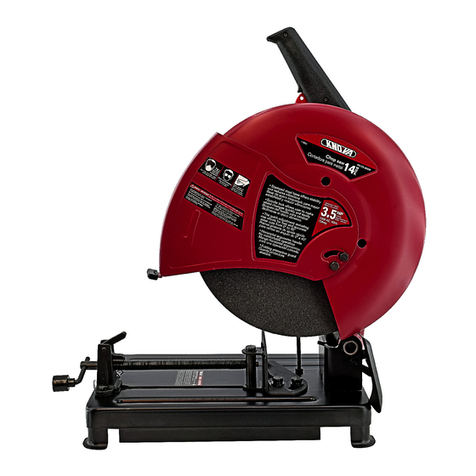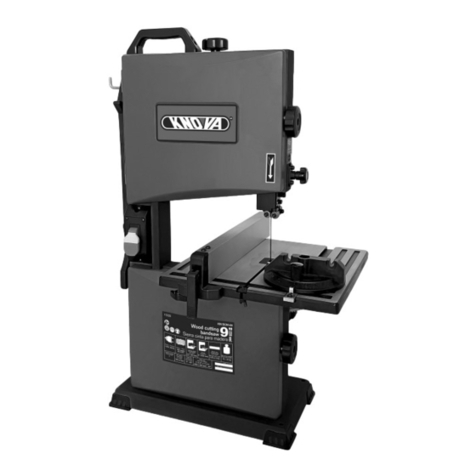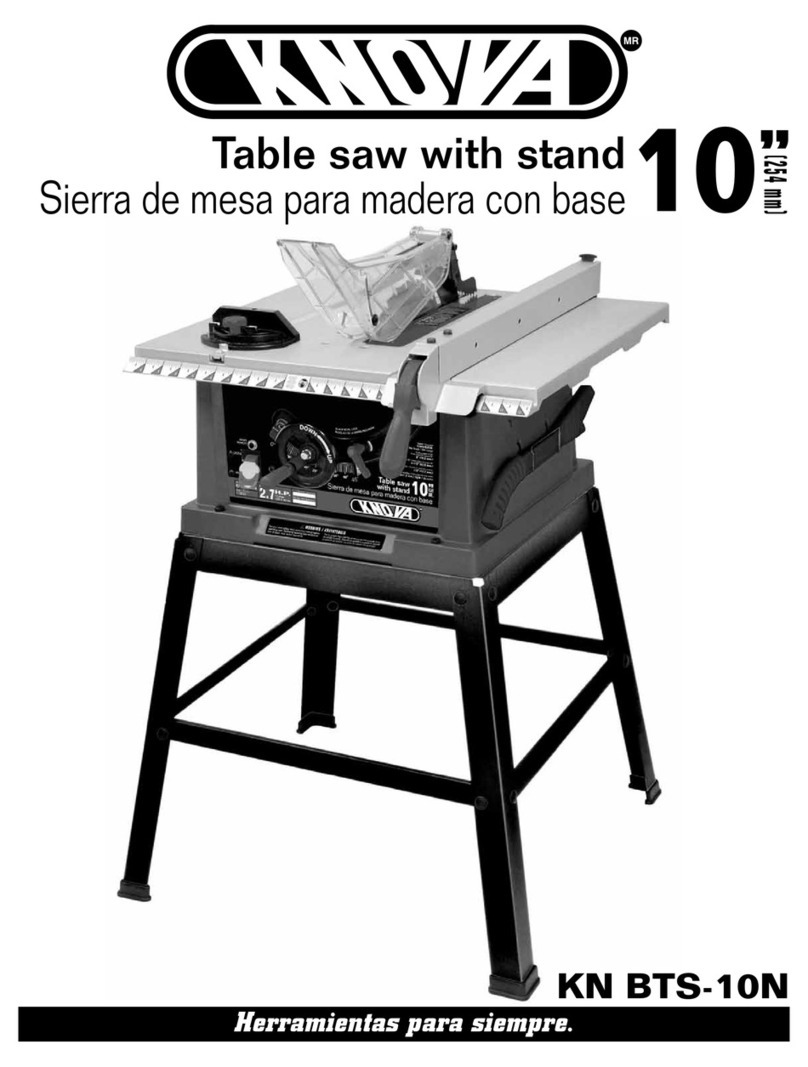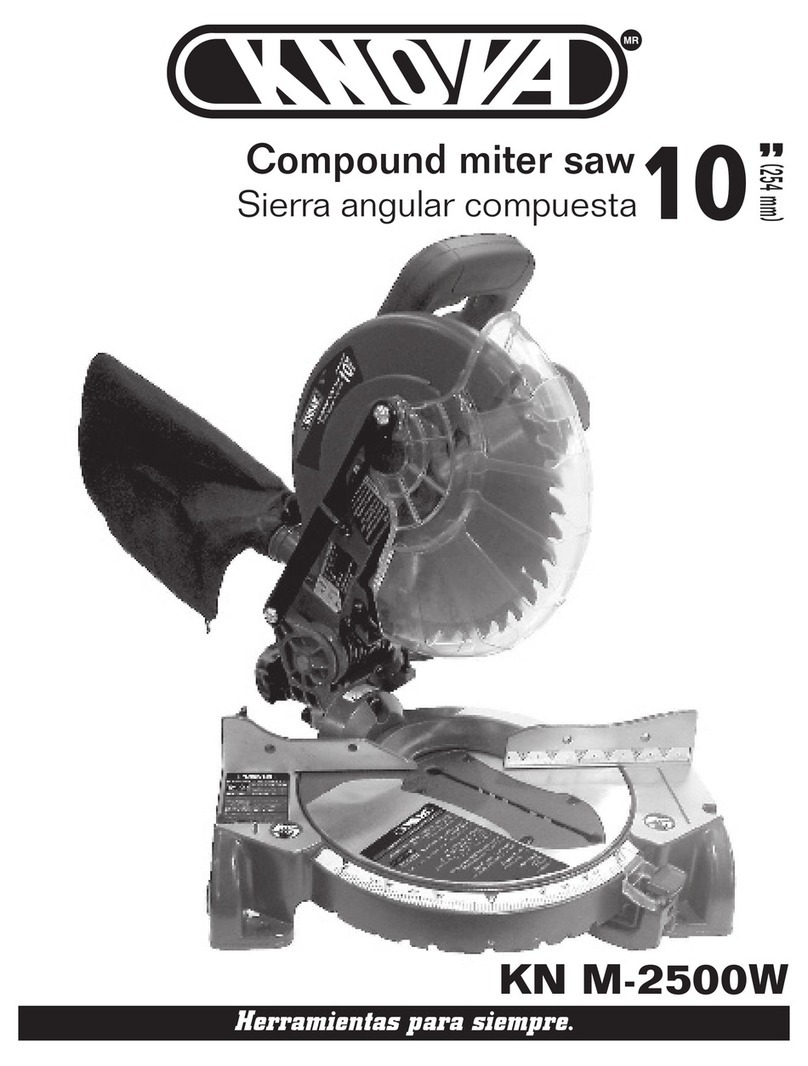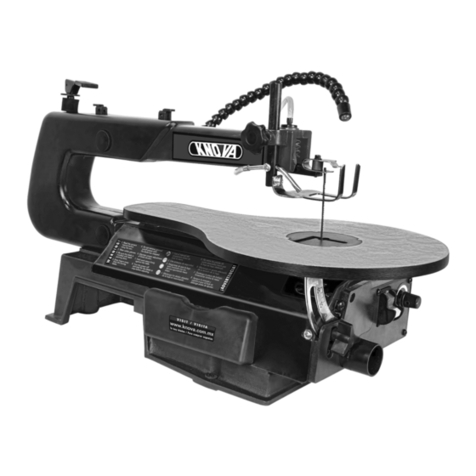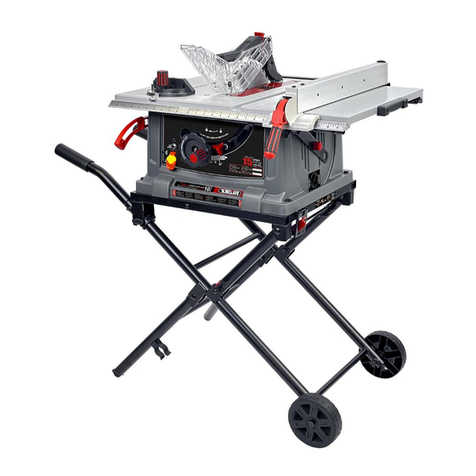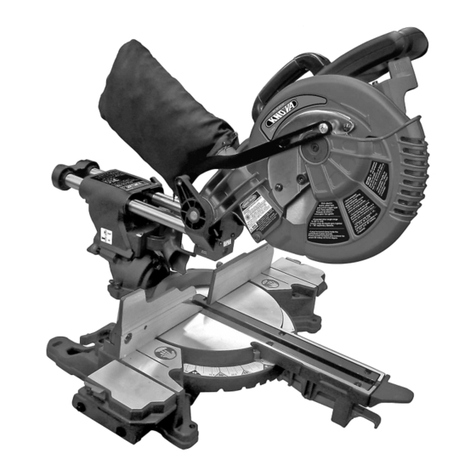
2
POWER TOOL SAFETY
2. KEEP GUARDS IN PLACE and in working order.
3. REMOVE ADJUSTING KEYS AND WRENCHES. Form
the habit of checking to see that keys and adjusting
wrenches are removed from the tool before turning ON.
4. KEEP WORK AREA CLEAN. Cluttered areas and
benches invite accidents.
5. DO NOT USE IN DANGEROUS ENVIRONMENTS. Do
not use power tools in damp locations, or expose them to
rain or snow. Keep work area well lit.
6. KEEP CHILDREN AWAY. All visitors and bystanders
should be kept a safe distance from work area.
7. MAKE WORKSHOP CHILD PROOF with padlocks,
master switches or by removing starter keys.
8. DO NOT FORCE THE TOOL. It will do the job better and
safer at the rate for which it was designed.
9. USE THE RIGHT TOOL. Do not force the tool or an
attachment to do a job for which it was not designed.
10. USE PROPER EXTENSION CORDS. Make sure your
extension cord is in good condition. When using an
extension cord, be sure to use one heavy enough to carry
the current your product will draw. An undersized cord
will result in a drop in line voltage and in loss of power
which will cause the tool to overheat. The table on page
3 shows the correct size to use depending on cord length
and nameplate ampere rating. If in doubt, use the next
heavier gauge. The smaller the gauge number,
the heavier the cord.
11. WEAR PROPER APPAREL. Do not wear loose clothing,
gloves, neckties, rings, bracelets or other jewelry which
may get caught in moving parts. Nonslip footwear is
recommended. Wear protective hair covering to contain
long hair.
12. ALWAYS WEAR EYE PROTECTION. Any power
tool can throw foreign objects into the eyes and
could cause permanent eye damage. ALWAYS
wear Safety Goggles (not glasses) that comply
with ANSI Safety standard Z87.1. Everyday
eyeglasses have only impact–resistant lenses.
They ARE NOT safety glasses. NOTE: Glasses
or goggles not in compliance with ANSI Z87.1
could seriously injure you when they break.
13. WEAR A FACE MASK OR DUST MASK.
Sawing operation produces dust.
14. SECURE WORK. Use clamps or a vise to hold
work when practical. It is safer than using your
hand and it frees both hands to operate the tool.
15. DISCONNECT TOOLS FROM POWER SOURCE before
servicing, and when changing accessories such as blades,
bits and cutters.
16. REDUCE THE RISK OF UNINTENTIONAL STARTING.
Make sure switch is in the OFF position before plugging
the tool in.
17. USE RECOMMENDED ACCESSORIES. Consult this
Instruction Manual for recommended accessories.
The use of improper accessories may cause risk of injury
to yourself or others.
18. NEVER STAND ON THE TOOL. Serious injury could
occur if the tool is tipped or if the cutting tool is
unintentionally contacted.
19. CHECK FOR DAMAGED PARTS. Before further use of
the tool, a guard or other part that is damaged should be
carefully checked to determine that it will operate
properly and perform its intended function – check for
alignment of moving parts, binding of moving parts,
breakage of parts, mounting and any other conditions
that may affect its operation. A guard or other part that
is damaged should be properly repaired or replaced.
20. NEVER LEAVE THE TOOL RUNNING UNATTENDED.
TURN THE POWER “OFF”. Do not walk away from a
running tool until the blade comes to a complete stop
and the tool is unplugged from the power source.
21. DO NOT OVERREACH. Keep proper footing and balance
at all times.
22. MAINTAIN TOOLS WITH CARE. Keep tools sharp and
clean for best and safest performance. Follow
instructions for lubricating and changing accessories.
23. DO NOT use power tool in presence of ammable liquids
or gases.
24. DO NOT operate the tool if you are under the inuence
of any drugs, alcohol or medicationn that could affect
your ability to use the tool properly.
25. Dust generated from certain materials can be hazardous
to your health. Always operate saw in well-ventilated
area and provide for proper dust removal.
WARNING
26. People with electronic devices, such
as pacemakers, should consult their physician(s) before
using this product. Operation of electrical equipment in close
proximity to a heart pacemaker could cause interference or
failure of the pacemaker.
27. SECURE WEAR HEARING PROTECTION
to reduce the risk of induced hearing loss.
ADDITIONAL SAFETY RULES FOR SCROLL SAWS
1. READ AND UNDERSTAND all safety instructions and
operating procedures throughout the manual. Retain this
manual as it contains important information regarding
safe operation of this tool.
2. DO NOT OPERATE the Scroll Saw until it is completely
assembled and installed according to the instructions.
3. SHOULD any part of Scroll Saw be missing, damaged, or
fail in any way, or any electrical component fail to perform
properly, shut off the switch and remove the plug from
the power supply outlet. Replace missing, damaged, or
failed parts before resuming operation.
4. IF YOU ARE NOT thoroughly familiar with the operation
of a Scroll Saw, obtain advice from your supervisor,
instructor or other qualied person.
5. SERIOUS INJURY could occur if the tool tips over or you
accidentally hit the cutting tool. Do not store anything
above or near the tool.
6. AVOID INJURY from unexpected saw movement. Place
the saw on a rm level surface where the saw does not
rock and bolt or clamp the saw to its support.
7. YOUR SCROLL SAW MUST BE SECURELY FASTENED
to a stand or workbench. If there is any tendency for the
stand or workbench to move during operation, the stand
or workbench MUST be fastened to the oor.

